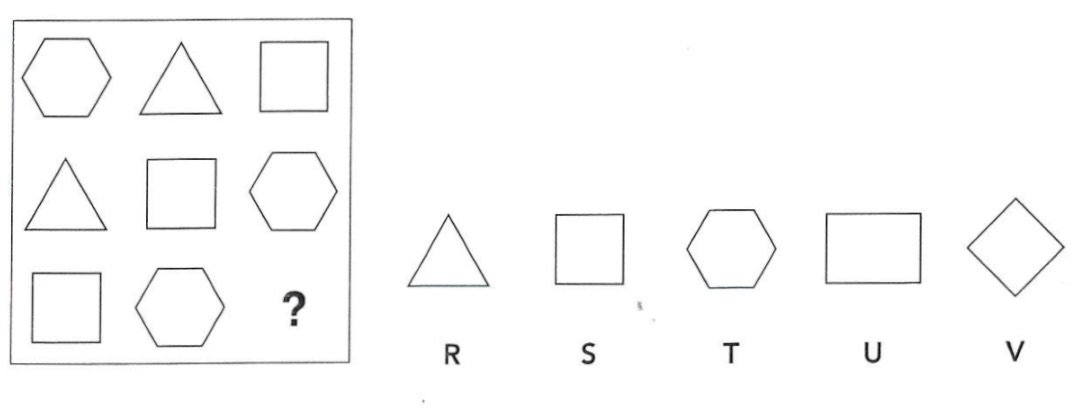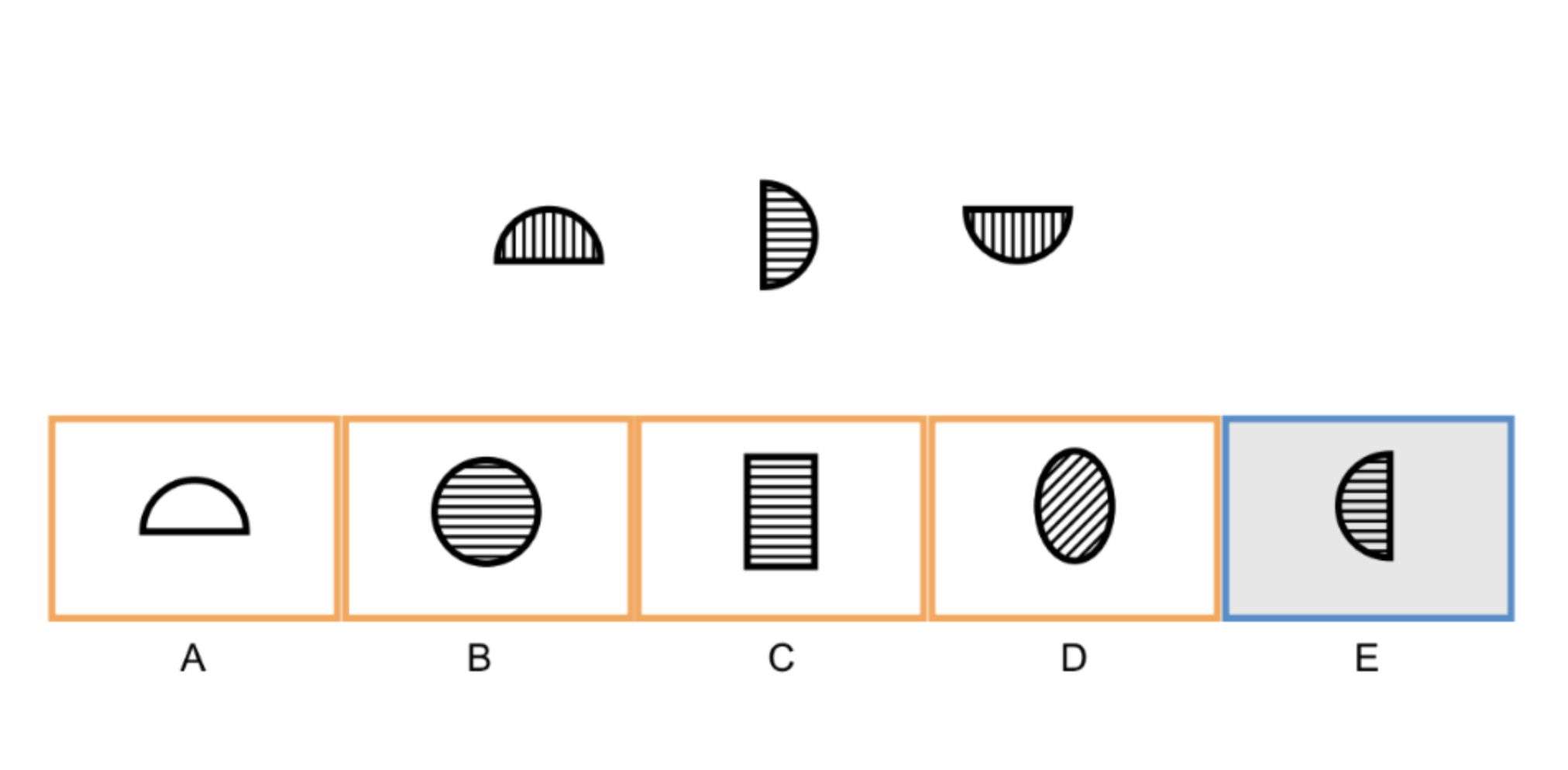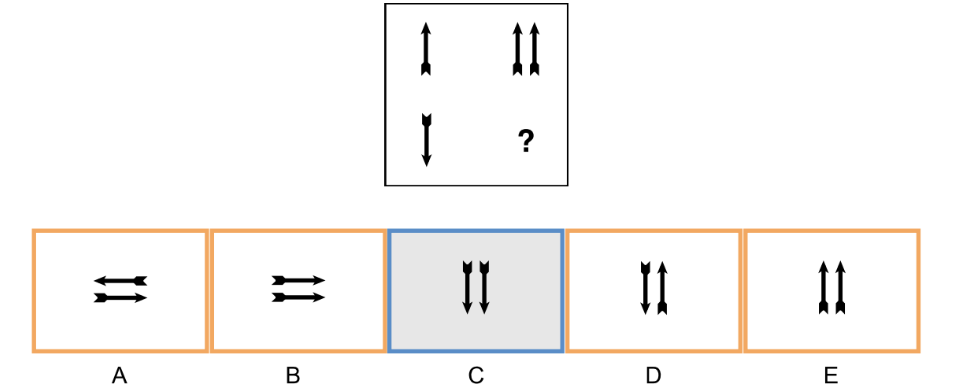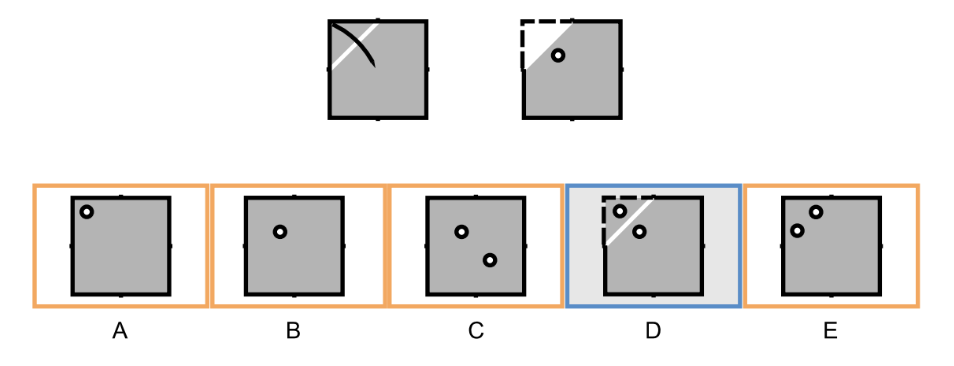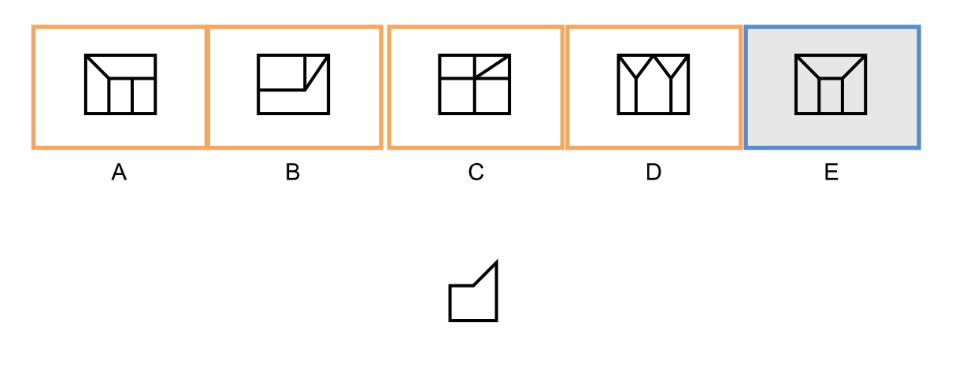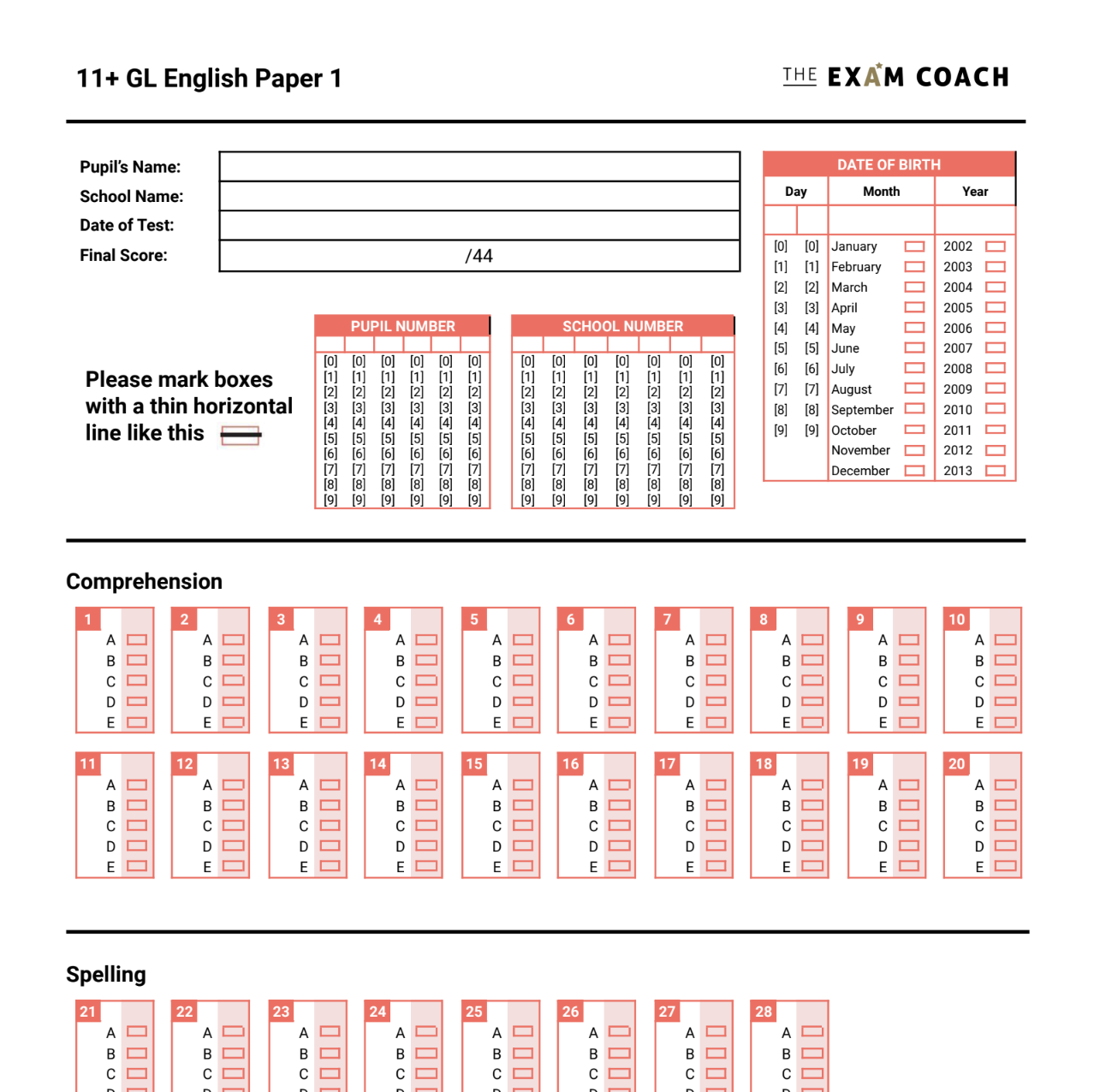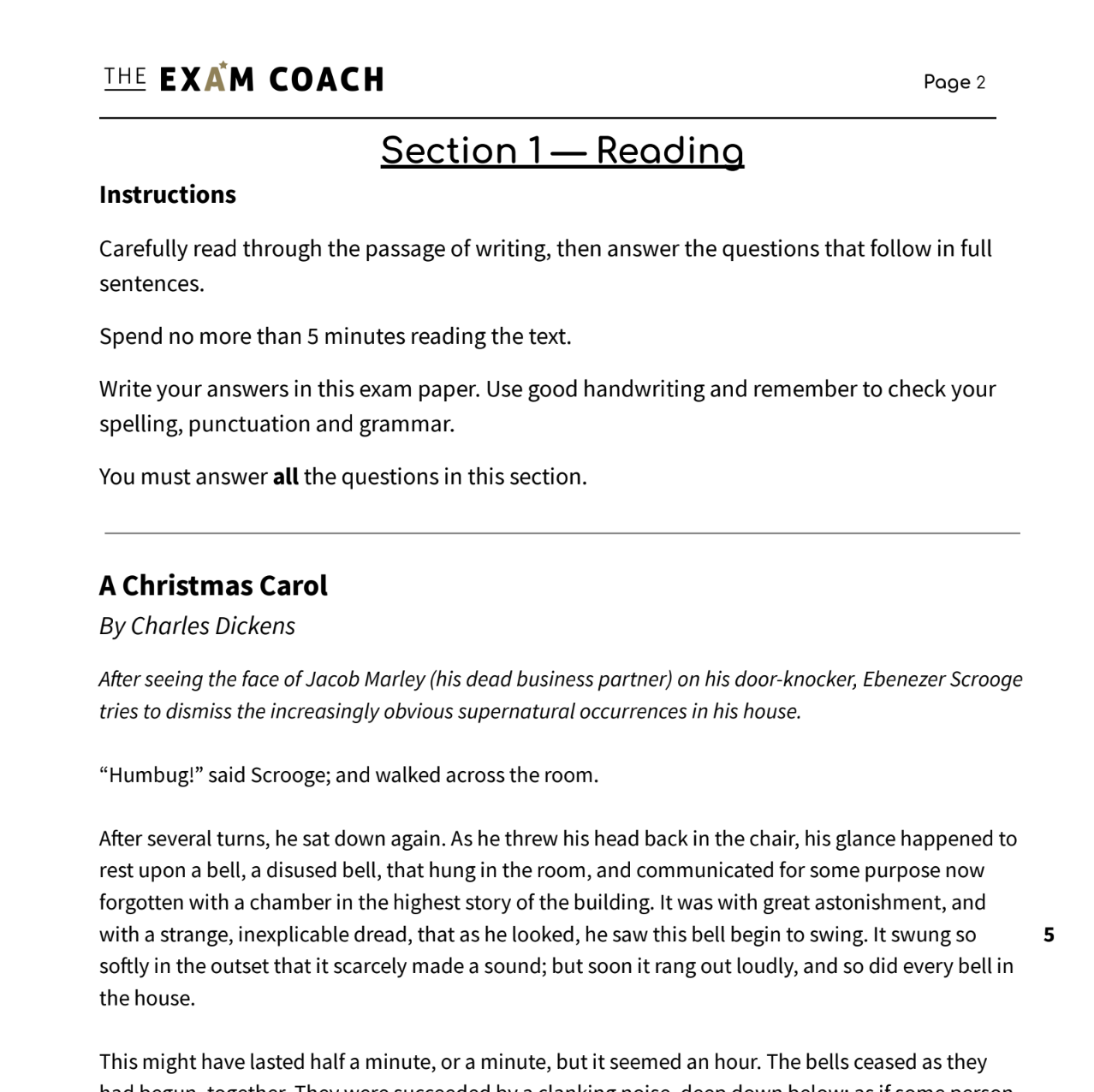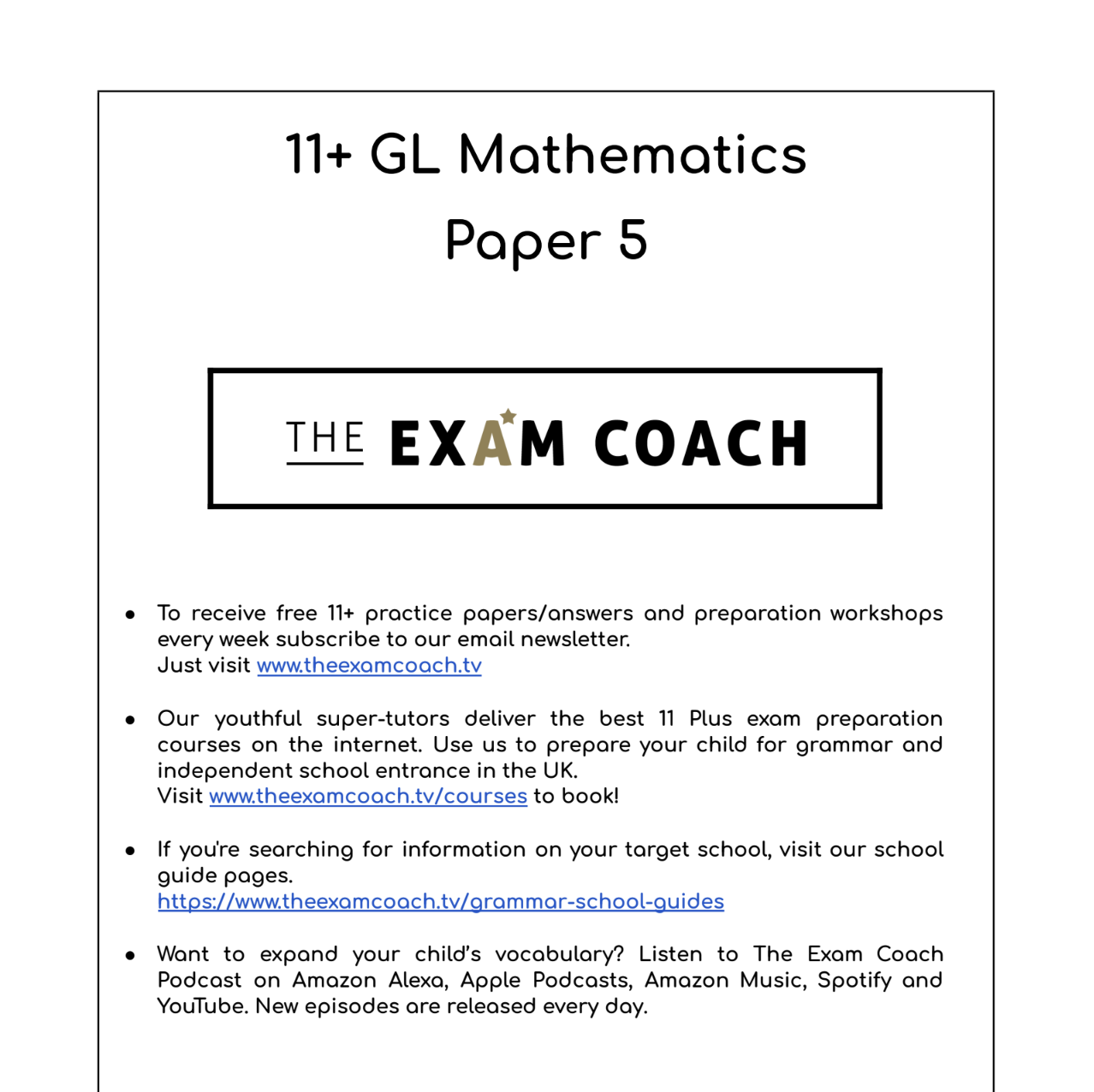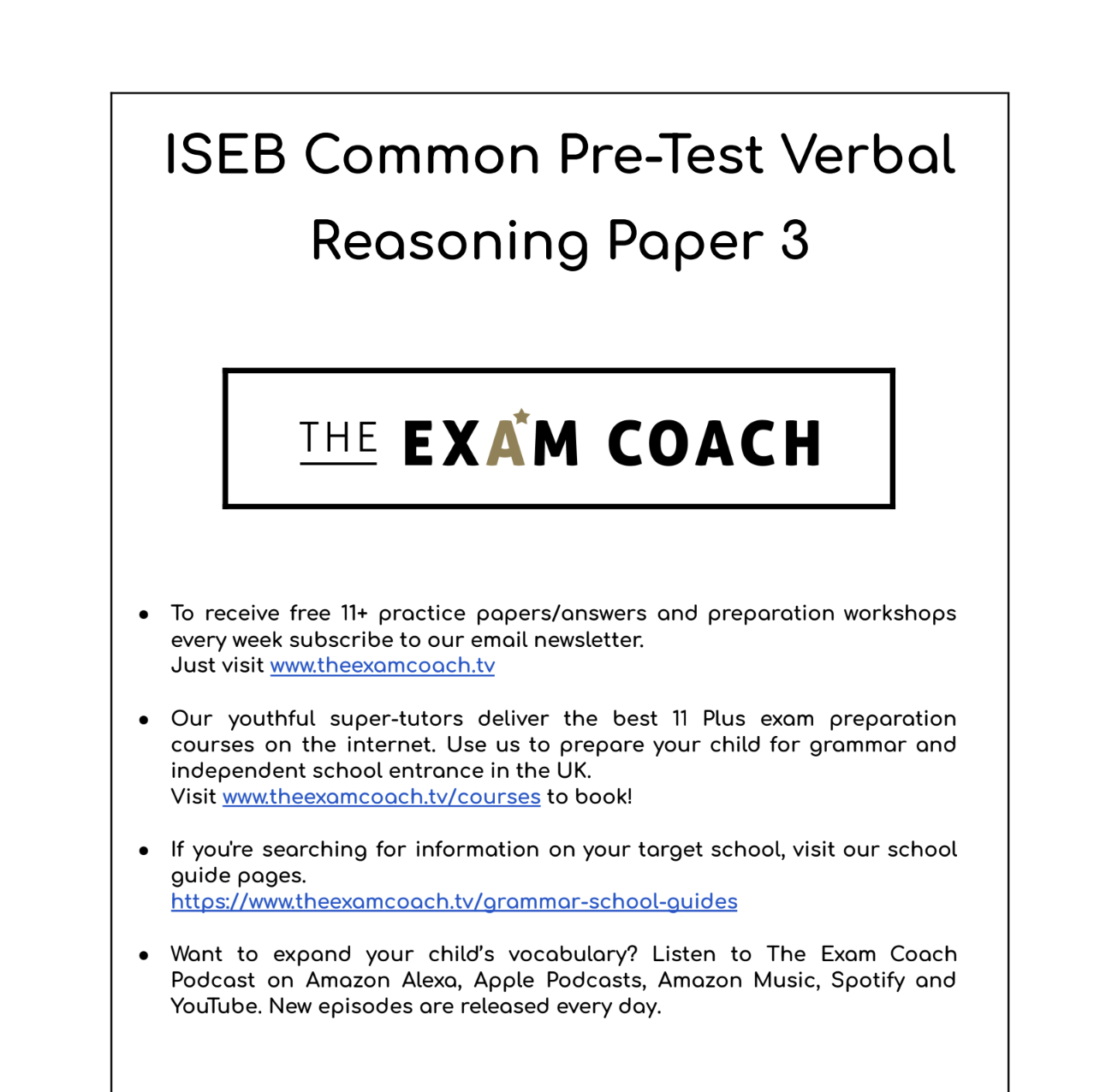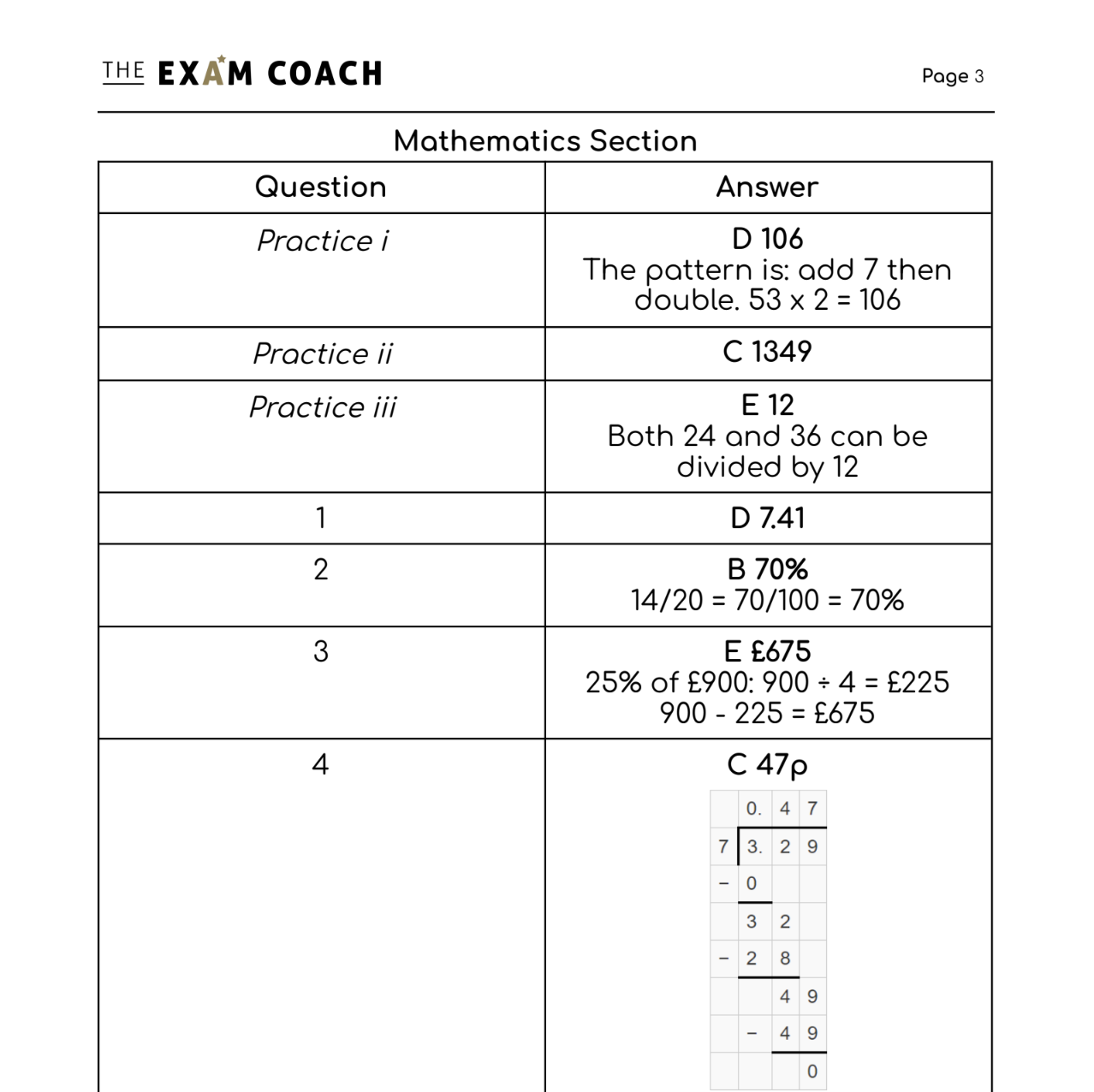11+ Exam Boards Comparison Table
Introduction
The 11 Plus exam syllabus differs slightly depending on the grammar or independent school you are applying for. However, the content of the 11+ does not vary much overall. All 11+ exams focus on the same subjects, recycling the same types of questions and content. Once you know this, you can use 11+ preparation resources for any exam board to help your child prepare for their 11+ exams.
The four main subjects covered by the 11+ are:
English
Maths
Verbal reasoning
Non-verbal reasoning
It is up to each school which subjects they test and how. Most schools that use an 11+ entry assessment work with an exam provider or body to administer the exam. There are several exam providers for the 11+ in England including GL, CEM, and ISEB, however some schools write their own exams.
The article below will shed some light on what subjects are tested by each of these exam boards and how you can use the many similarities between all 11+ exams to your advantage. We hope this will help you to make the most of all the free revision resources we provide, no matter your chosen school’s exam board.
GL (Granada Learning) Assessment
GL Assessment is a leading provider of 11+ admissions testing in the UK. They administer the majority of tests for the 11 Plus exams. All questions are multiple choice with five answer options per question.
GL offers exams in all of the main four subjects:
English
GL English papers test: comprehension skills; use of capital letters and punctuation; spelling; word choice and grammar.
Maths
GL maths papers test: knowledge of times tables; quick mental arithmetic; understanding of shapes, space and measures; applying the four basic operations (addition, subtraction, multiplication and division) and graph reading.
Verbal Reasoning
GL verbal reasoning papers test: processing verbal information; similarities and differences between words; applying logical thinking and problem-solving skills; identifying patterns and demonstrating the understanding of the rules and meaning of language. Here are all of the individual question types that could be examined:
Insert a Letter
Odd One Out
Related Words
Closest Meanings
Opposite Meanings
Hidden Words
Missing Words
Letters for Numbers
Move a Letter
Letter Series
Number Series
Word Connections
Compound Words
Make a Word
Letter Connections
Reading Information/Solve the Riddle
Complete the Sum
Related Numbers
Word-Number Codes
Complete the Word
Same Meanings
Non-Verbal Reasoning
GL non-verbal reasoning papers test: processing graphic information and following patterns or rules; applying mathematical skills (such as rotation, reflection and symmetry); use of spatial awareness; applying logical thinking and problem-solving skills.
Odd One Out
Rotations
Code Breaking
Like Shapes Identification
Missing Sequences
Missing Squares
Most Alike
Nets
Spatial Recognition
The GL 11+ consists of either a single test or a series of tests depending on the school. Each of these tests can cover one or more of the subjects listed above. Tests will vary depending on the local authority's or individual school’s decision as to which subjects to test.
Most GL 11+ papers contain some form of verbal reasoning as GL believe that this is proven to be the best predictor of future academic potential. Verbal reasoning tests identify a child’s ability to think logically about written information and then use this skill to solve problems.
If your child needs help developing their verbal reasoning skills, please join us for our weekly verbal reasoning free taster sessions. You can sign up for this week’s workshop here.
You can find specific information on your chosen grammar school’s use of GL Assessment testing by clicking the button below.
CEM (Centre for Evaluation and monitoring)
CEM is run by Cambridge University Press and Assessment. It was established in 1999 after concerns were raised over the use of tutors and coaching for GL Assessment. CEM aims to enable children to demonstrate their academic potential and ability without the need for coaching and excessive preparation. However, their exams are very similar in style and content to those of GL Assessment.
CEM offers exams in three subjects:
Maths
This is referred to as ‘numerical reasoning’ by CEM.
Verbal Reasoning (and English)
CEM’s definition of ‘verbal reasoning’ is a lot broader than that of GL Assessment and most other 11+ exam boards. Therefore, CEM’s verbal reasoning exams include aspects of English exams (such punctuation, grammar and comprehension questions).
CEM also can include cloze passages with missing words that need to be filled in by students.
Here are all of the individual question types that could be examined:
Reading/Comprehension
Closest Meanings
Opposite Meanings
Same Meanings
Cloze Passages
Complete the Word
Missing Words in a Sentence
Spelling Errors
If your child needs help developing their verbal reasoning skills, please join us for our weekly verbal reasoning free taster sessions. You can sign up for this week’s workshop here.
Non-Verbal Reasoning
CEM 11+ exams are usually 45-50 minutes long. There is often more than one paper and all questions are multiple choice with four or five answer options per question. CEM papers contain timed sections and each paper includes a mixture of all subjects. Children must work through each section and then wait until they are told to continue.
Here are all of the individual question types that could be examined:
Rotations
Code Breaking
Like Shapes Identification
Missing Sequences
Missing Squares
Most Alike
Nets
Spatial Recognition
You can find specific information on your chosen grammar school’s use of CEM testing by clicking the button below.
The Kent Test
Kent is the largest grammar school area in the UK and as a result, it runs its own 11+ test. This test is also provided by GL Assessment. So (as you can probably thought) the Kent Test and GL Assessment exams are very similar. Please see above for more information and the possible question types.
The Kent Test tests all four of the main 11+ subjects in the same way as GL:
English
Maths
Verbal Reasoning
Non-Verbal Reasoning
The Kent Test also offers a creative writing exercise. This is not marked unless it is needed by a school panel as part of the headteacher assessment stage of the process.
There are always two 1 hour exams followed by a 40-minute writing exercise. Like GL, the Kent Test’s questions are multiple-choice with five answer options for each question.
You can find specific information on your chosen grammar school’s use of The Kent Test by clicking the button below.
The Sutton SET (Selective Eligibility Test)
The Sutton SET is a first stage 11+ exam used by the six grammar schools in the London Borough of Sutton. They are:
Greenshaw High School
Nonsuch High School for Girls
Sutton Grammar School
Wallington County Grammar School
Wallington High School for Girls
Wilson’s School
The Sutton SET tests two of the main 11+ subjects:
English
The Sutton SET’s definition of English includes some verbal reasoning style questions.
Here are all of the individual question types that could be examined:
Spelling Mistakes
Punctuation Mistakes
Comprehension
Word Meanings
Closest Meanings
Opposite Meanings
Parts of Speech
Language Techniques
Fill in the Gaps
Maths
The Sutton SET consists of two 40-50 minute exams. Both are multiple choice with five answers options per question. The content of the exams is in line with the KS2 curriculum.
You can find specific information on your chosen grammar school’s use of the Sutton SET by clicking the button below.
ISEB (independent schools examination board) Common Pre-Test
ISEB is known for producing the Common Pre-Test and Common Entrance examinations which are sat to gain entry to some of the top independent schools in the UK and abroad. As the ISEB Common Pre-Test is created by GL Assessment, the questions and question types found in this exam are very similar to those which appear in the 11+ GL exams. All questions are multiple-choice with five answer options for each question.
The ISEB Common Pre-Test is sat in Years 6 or 7 as a pre-test to determine a child’s eligibility to apply for the Common Entrance examination which is sat at the end of Year 8.
The ISEB Common Pre-Test assesses all of the main four subjects:
English
Comprehension, missing words in sentences, spelling and punctuation
Here are all of the individual question types that could be examined:
Comprehension
Sentence Completion
Spelling Mistakes
Punctuation Mistakes
Maths
Any maths skills in line with the KS2 national curriculum up to the end of Year 5.
Verbal Reasoning
Thinking and problem-solving with words.
Here are all of the individual question types that could be examined:
Common Words
Opposite Meanings
Closest Meanings
Word Combinations
Letter Transfer
Number codes
Non-Verbal Reasoning
ISEB tests thinking and problem-solving with shapes, diagrams and pictures.
Here are all of the individual question types that could be examined:
Analogies
Like Classes
Horizontal Codes
All four of the ISEB Common Pre-Test exams take two and a half hours to complete.
The English test takes 25 minutes.
The maths test takes 50 minutes.
The verbal reasoning test takes 36 minutes.
The non-verbal reasoning test takes 32 minutes.
The four tests can be taken together or separately, but once a section is started it must be completed in one go. The tests can be completed in any order. Each test has a timer which counts down the time remaining for that section.
The four ISEB Pre-Test exams are taken online. A progress bar can be seen at the bottom of the screen at all times. The timer at the top of the screen shows students how much time they have remaining.
You can find specific information on your chosen school’s use of the ISEB Common Pre-Test by clicking the button below.
CAT4 (Cognitive Abilities TesT)
CAT4 is an assessment in different types of reasoning, created by GL Assessment. AS you might have thought, they are very similar in content. The CAT4 is taken by 750,000 students a year from the ages of 6-17. All questions are multiple-choice with five answer options for each question. CAT4 can be taken either online or on paper, but most schools prefer to use it online. The CAT4 test for the 11+ “provides you with an accurate analysis of potential student achievement”. It is similar to an IQ test, providing the school with a profile of each student’s ability in four areas:
Verbal Reasoning
This test focuses on a child’s ability to express ideas and use reason when faced with word problems. This also tests vocabulary knowledge.
Here are the question types that will be examined:
Verbal Classification
Verbal Analogies
Non-Verbal Reasoning
This test focuses on problem-solving using pictures and diagrams, rather than words.
Here are the question types that will be examined:
Figure Classification
Figure Matrices
Spatial Reasoning (or Maths)
Spatial reasoning is a term that we have not mentioned yet, but don’t let that scare you or your child. This tests a child’s ability to find answers when faced with questions that use three dimensions (e.g. - finding the volume of a 3D shape). Most other exam boards include this in their 11+ maths exams.
Here are the question types that will be examined:
Figure Analysis
Figure Recognition
Quantitative Reasoning (or Maths)
Finally, this tests a child’s ability to use numbers to solve problems… It is just a fancy name for maths.
Here are the question types that will be examined:
Number Analogies
Number Series
Overall, the CAT4 takes 72 minutes. It is composed of 8 short tests assessing the following subsections of the four areas above:
Figure Classification (10 mins)
Figure Matrices (10 mins)
Verbal Classification (8 mins)
Verbal Analogies (8 mins)
Number Analogies (10 mins)
Number Series (8 mins)
Figure Analysis (9 mins)
Figure Recognition (9 mins)
You can find specific information on your chosen independent school’s use of CAT4 by clicking the button below.
Independent School Testing (Grammar VS Independent Schools)
This is where the 11+ syllabus differs a little. While content and topics remain similar, there are some bigger differences between the 11+ exam style for grammar schools (as detailed above) and the 11+ exams sat by independent (also known as private) schools.
Firstly, most English independent schools tend to write their own 11+ entrance exams. Therefore, there is a greater variety in topics covered and question styles. While most grammar school exams tend to consist of multiple-choice questions, independent schools often use standard answer (also known as written answer) questions. This is because grammar school exam boards use optical readers to mark exam papers, whereas independent school papers are marked by people (often teachers at the school).
English Independent School Exams
Independent school English exams use standard answer questions. Similar to grammar school exams, there is almost always a comprehension exercise. Independent schools are known to use more difficult texts and questions. An independent school exam tends to place more focus on understanding and interpreting the meaning of a text or author, especially when using a classic text. A wide vocabulary is needed to do well in this exam.
If your child needs help developing their vocabulary, please join us every weekday morning by listen to our 11+ Daily Vocab Show podcast. You can listen to the first episode below.
Furthermore, there is less of a focus on specific spelling, punctuation and grammar questions in an independent school English exam. This is because longer, written answer questions require students to write in correct and accurate English. Marks can be awarded and lost for use of spelling, punctuation and grammar during this.
The most important difference here is independent schools’ use of creative or persuasive writing as part of their English exams. Most grammar school exams are marked by computer and therefore large written exams are not taken into account. The Kent Test assesses creative writing, but only as a back-up to help solve any tie-breaks between students competing for the same place at a school. Most (if not all) independent school exams include a writing section, which counts towards the final mark of the exam. Therefore, developing your child’s creative and persuasive writing skills can be key to succeeding in an independent school’s English exam.
Take a look at some of the best 11+ creative and persuasive writing answers Exam Coach students have produced by clicking here.
Maths Independent School Exams
Again, a major difference here is the use of standard answer questions. 11+ maths exams for independent schools including longer, detailed questions, often with multiple parts. Marks are given for clear workings as well as the correct answer for most questions.
Overall, independent school maths exams tend to include fewer, but more difficult, questions. The majority of the questions in these exams will align with the KS2 curriculum (up to and including Year 6). However, some schools are known to include a few tricker questions at the end of the paper. These will often include content that students have not been taught at school, requiring them to use their existing maths knowledge and logic to find the answer. This is done in order to single out the very best and most gifted young mathematicians.
Verbal Reasoning Independent School Exams
Verbal reasoning exams do not tend to differ much between grammar and independent schools. Most independent schools buy their VR tests from the same exam boards as grammar schools (namely GL Assessment, CEM or ISEB) meaning they sit the same type of exam.
Please see above for more information on how these different exam boards test verbal reasoning and the possible question types. If you are unsure which exam board your school uses, please check your school website.
Non-Verbal Reasoning Independent School Exams
Finally, non-verbal reasoning testing is less common among independent schools. There are currently no independent schools in England which use their own non-verbal reasoning exam.
Similarly to the above, most independent schools that test non-verbal reasoning buy their tests from the same exam boards as grammar schools, this means children will sit the same type of exam.
Please see above for more information on how these different exam boards test non-verbal reasoning and the possible question types. If you are unsure which exam board your school uses, please check your school website.
You can find more specific information on your chosen independent school’s 11+ entrance exams by using the search bar below.
How To Prepare For The 11 Plus Exam (All Exam Boards)
The Exam Coach offers a wide range of free 11+ practice papers and answers for children preparing for their 11+ exams.
You can find specific information and preparation resources/papers for your chosen grammar or independent school by searching for your school in the search bar below.
The Exam Coach’s own practice papers, answering booklets and answers are also available free of charge to help your child prepare for their 11 Plus exams.
We offer free papers for all major 11+ exam boards and using this article, you should now be able to understand how to use all/most of these to aid your child’s preparation, no matter which 11+ exam they are due to sit.
Did you find this article helpful? Let us know in the comments below
For more 11+ help, advice, resources and a new 11+ practice paper every week, sign up to our email newsletter below.








